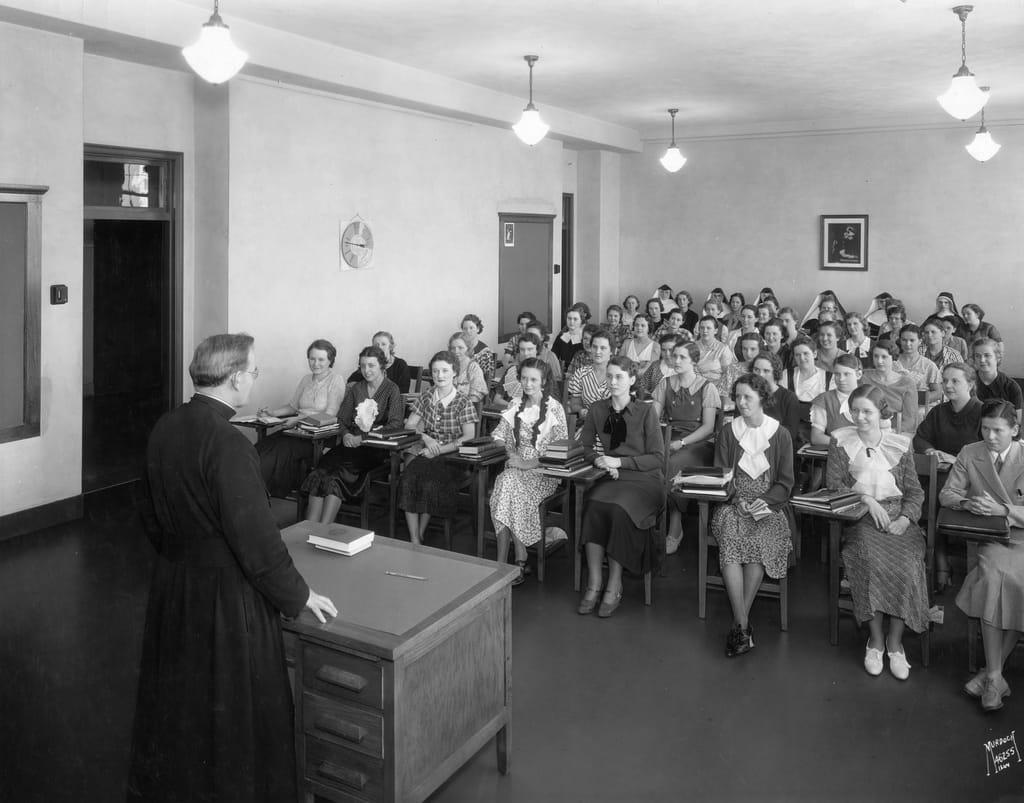
New ESEA waiver guidance will sink schools where all boats are rising
Secretary Duncan's latest misstep. by Michael J. Petrilli

Secretary Duncan's latest misstep. by Michael J. Petrilli






A few weeks ago, I bemoaned an Education Trust report positing that schools shouldn’t get A grades if they have significant achievement gaps, even if their students are making lots of progress. I guess I didn’t make a convincing case, particularly to the folks at 400 Maryland Avenue. As Anne Hyslop reported, the newly announced NCLB waiver guidelines now ask states for “a demonstration that a school may not receive the highest rating in the state’s accountability system if there are significant achievement or graduation rate gaps in the school that are not closing.” As Anne wrote, “this is almost verbatim from the recommendations” put forth by Ed Trust.
But is this a smart idea? Consider the case of Sawgrass Elementary School in Broward County, Florida. Let’s examine its stats (downloaded from this Florida Department of Education site). First look at the demographics, which show it to be a rare model of racial and socio-economic diversity:
As for academic performance, Sawgrass has been making big gains in both math and reading, both overall and for its lowest-performing students. As for subgroups, let’s look at the percentage of students scoring at “satisfactory” or above on mathematics:
Is it any wonder that the state of Florida gives Sawgrass Elementary an A?
Yet the feds, under pressure from Ed Trust and other civil rights groups, now intend to take this A away because—guess what?—Sawgrass has an achievement gap. Let’s roll out the numbers again for percentages of student groups at the “satisfactory” level in math:
Never mind that those gaps are dramatically narrower than the gaps for the United States, or the state of Florida, or Broward County. Because there are gaps, the folks in Washington don’t think this school deserves an A.
Perhaps Sawgrass would sneak through under the new policy if it were “closing” achievement gaps. Or maybe Florida can make the case that these particular gaps are not “significant.” But why force the state to go through these sorts of acrobatics? Why are we so afraid to celebrate a school that is clearly doing right by so many kids?
Furthermore, most states will begin using much tougher Common Core-aligned assessments this year. Their higher cut scores for proficiency will automatically widen achievement gaps, at least at first. (Because average white scores are so much higher than average black and Hispanic scores, a higher cut score will automatically make gaps look bigger. If that leaves you scratching your head, ask a math teacher.)
“Closing achievement gaps” is a wonderful and worthy aspiration. (So was universal proficiency.) But baking that expectation into accountability systems is destined to deflate the grades of schools like Sawgrass and demoralize their teachers, students, and families.
These machinations will also further polarize the politics around ESEA reauthorization—with the administration choosing to play to its base rather than focus on governing. Why poison the well with Republican leaders on Capitol Hill just days after a resounding GOP victory in the midterms? Why second-guess policymakers in Florida, especially considering its incredible progress in narrowing achievement gaps over the past decade? Why fuel the anti-testing, anti-accountability fires?
The country is tiring of being told by Washington do-gooders how to manage its schools. Someone ought to tell the Secretary.


On November 11th, the Fordham Institute’s Chester E. Finn, Jr. addressed a private meeting of reform-minded Catholic education leaders and philanthropists. What follows is adapted from his remarks on that occasion.
Two big changes in American education policy over the past several decades have been good for the country and for kids in general, but not particularly good for Catholic schools, especially the urban variety.
First, families now have myriad choices, many different kinds of schools and ways of getting educated, so we no longer take for granted that our child will go to your neighborhood or parish school. Second, we now judge schools by their results, not by their inputs, intentions, or reputations, and we’re increasingly hard-nosed about those results, looking—probably too much—at test scores and graduation rates and such.
Both of these changes have tended to leave Catholic schools behind. With some worthy exceptions, their leaders haven’t tried very hard to take advantage of them. They haven’t been nimble or enterprising in making use of the opportunities presented by new forms of publicly supported choice. Nor have they—or private schools generally—done well in accommodating the shift to judging schools by quantifiable and comparable outcomes.
Integral to both big shifts has been the creation of uniform, statewide, grade-by-grade academic standards. Accompanying those standards are statewide assessments, followed by complicated reporting and accountability schemes. In some places, Catholic schools must participate in these, usually as a condition of receiving students with vouchers; in a handful of places, diocesan authorities have willingly joined in, but nobody would say there’s been a great rush by Catholic schools to be compared—with charter schools, with district schools, with other private schools, even with each other—on the basis of academic achievement.
Yes, there are solid arguments to be made about both the differentness of the Catholic school curriculum and the shortcomings of state standards and tests. But on balance, I think, it’s been a mistake, one that we wouldn’t dream of accepting in other sectors. Imagine Catholic hospitals, for example, not participating in the Medicare hospital-information system. Pick any Catholic hospital in the land, look it up on this Medicare site, and you can easily obtain all sorts of information about the quality of care that it provides, including postoperative complications, readmission rates, death rates for heart-attack patients, what former patients think about the nursing, and on and on. Moreover, all of these data can be compared with national hospital averages, with state averages, and with other hospitals in the area.
I defy you, however, to find anything even faintly analogous for Catholic schools. Yet how can any entity compete successfully in a competitive market if it doesn’t make it easy for prospective clients, employees, benefactors, and others to know how it’s doing across multiple metrics and in comparison with others in that market?
Granted, Catholic schools strive to do important things for the children who attend them beyond adding to their test scores. They’re also good for communities—especially the urban variety—for Catholic churches, and for the Church as a whole. The best of them are surely worth preserving, improving, reconstituting, maybe expanding or replicating. It’s time to end their slow decline and all the handwringing. But how?
I have five suggestions, some admittedly more actionable than others.
First, there needs to be some triage here. Some Catholic schools are worth expanding. Some ought to be closed. Some are worth trying to repair. But other than the obvious market tests of popularity—do enough people want to attend—and financial viability, you’re going to have trouble determining which schools belong in which category absent a great deal more data than we have today. So gather it. Analyze it in sophisticated ways, and make it transparent to the larger world. I think you should include more data that’s comparable with public schools, which would almost surely mean taking the state tests. But you could engage in a great deal of useful analysis (and triage) within the Catholic school universe without necessarily embracing state standards and assessments.
Second, put more effort into starting schools, networking schools, and replicating good schools than into salvage and rescue efforts. I know it’s not a sharp distinction, and networking may improve the prospects for rescue, too. When a colleague recently took charge of curriculum and instruction in a newly assembled network of Catholic schools, she faced several challenges: There was no systematic or standards-aligned curriculum, no discernible instructional model, woeful achievement, weak data, and weaker uses of it. Mind you, these are Catholic schools that serve needy kids in tough neighborhoods. Yet they’re not good schools today by any modern definition of good schools. Just keeping them going as they have been is not a cause I’d invest much in, if only because the kids they teach deserve something far, far better. But the radical overhaul they need likely wouldn’t happen without the infusion of expertise and resources—and fresh eyes—that is part of networking.
Third, most Catholic schools need to modernize across all sorts of areas, not just governance and business management. I’m not the only person who believes that blended learning is tailor-made for individualization within Catholic schools, as well as for economizing, updating staff structures, and making school a lot more engaging for kids. See what can be done with flipped classrooms. And let’s see some other kinds of innovating, too: some Catholic schools that focus on gifted pupils and some that focus on special-needs students. Integrate quality preschools into elementary schools, and meld quality postsecondary options with high schools. Build in teacher training and retraining as the best charter management organizations have done. Deploy school principals with very different backgrounds than today’s. And don’t assume that traditional academics are the only way to go. What about some terrific career-technical schools, perhaps teamed up with apprenticeship programs, community colleges, and nearby Catholic colleges?
Fourth, find ways of engaging more successfully with public policy in ways that benefit Catholic schools and students. Sure, that includes vouchers and such, but there are many other possibilities, such as amending state charter laws to allow existing private schools to convert and even making room for religious charter schools.
Fifth, recognize that fewer people are going to send their children to Catholic schools just because they’re Catholic. Many more will be looking for things that Catholic schools have traditionally been known for—academic achievement, discipline, character and values, good behavior, safety, caring adults—than will be seeking religion per se. Here again, I believe you need to be able to muster evidence—reliable, transparent evidence—that the schools truly do all things—and do them better than other schools. That means more than data; it also means serious research.
If you offer people better schools—schools that you can prove are better, not just assert are better, and not just in terms of achievement but across a number of domains that are important for kids—and if they’re accessible and affordable, people will send their children to them. But what to do with thousands of existing schools that present such a mixed bag of betterness and not-betterness and that, by and large, can’t prove it? Back to triage, focused on places—cities, metro areas, maybe states, but not the whole country. Don’t be too sentimental. And start with places that are growing, not places that are dying.
There’s opportunity ahead for Catholic schools. It arises partly from the election returns and other political changes, including slowly weakening teacher unions. But it also arises from broad demographic trends. Did you know that there will be almost 3 million more students in American pre-K–12 schools in 2022 than today? The potential market is growing—and much of that growth consists of Latino kids with Catholic origins. It’s a good time to use the means at your disposal to build a better mousetrap, without losing sight of all you need to do besides simply catching mice or hanging onto those that you already caught.
photo credit: Marquette University via Flickr


In the spring and fall of 2013, Fordham enlisted veteran journalist and former Dayton Daily News editorial-page editor Ellen Belcher to dig deep into the world of voucher schools across Ohio, trying to understand what happens in these school buildings as the mission to educate is tested by changing demographics and school culture.
Join us, Ellen, and private school leaders to discuss the fascinating findings.
|

For all the talk about the importance of recruiting the most talented teachers to our schools, there’s surprisingly little data about whether the tools districts use to vet candidates can actually predict anything about outcomes later down the road. This study by Dan Goldhaber and colleagues explores the predictive validity of hiring rubrics used in Spokane Public Schools. Teacher candidates in Spokane go through three steps before being hired: First they are pre-screened based on a rubric that assesses their experience and skills. The applicants who pass are then evaluated by additional screeners and principals using a more detailed evaluation rubric that assesses would-be teachers on ten criteria, including certification, training, classroom management, instructional skills, interpersonal skills, etc. Those results are then used to select candidates for in-person interviews. Analysts compared results from hired teachers to those not hired but employed elsewhere in the state. They merged a variety of teacher demographic and outcome data with the hiring data and found that the screening tools predict teacher value added in student achievement, as well as teacher attrition. Specifically, a one-standard-deviation increase in the score on the more comprehensive tool is associated with approximately a 0.07 standard deviation increase in math achievement, up to a 0.05 standard deviation bump in reading, and a decrease in attrition by roughly 2.5 percentage points. Of the subcomponents on the rubric, a few areas have the strongest relationship to teacher effectiveness: They include classroom management for both reading and math—and, for math only, it’s instructional skills, depth and quality of training, and whether the teacher is willing to learn new concepts and procedures (what they call “flexibility”). Certification and education background have a much weaker relationship to effectiveness. Keep in mind that results might not generalize to other districts. That said, the report suggests that we can indeed improve the quality of the teacher workforce through more effective hiring practices, and that includes using screening tools.
SOURCE: Dan Goldhaber, Cyrus Grout, and Nick Huntington-Klein, “Screen Twice, Hire Once: Assessing the Predictive Validity of Teacher Selection Tools,” Center for Education Data & Research, Working Paper 2014-9 (2014).

By recording every utterance in a few dozen homes with small children and doing a little math, University of Kansas child psychologists Betty Hart and Todd R. Risley uncovered a startling and sobering fact twenty years ago: Children of professional classes hear about 30 million more words by the age of three than the children of families on public assistance. That’s before any of them, rich or poor, set foot in kindergarten for the first time. The constant patter of verbal adults sets off a virtuous circle of language growth for affluent kids (the more words you know, the easier it is to learn even more), but for the poor it’s a vicious one. Since then, various intensive and expensive interventions—from programs in pediatricians’ offices to home visits—have attempted to get low-income parents to speak, read, and engage in more home literacy activities with their children. A cheaper and more effective plan may be at hand—actually, in your hand. The National Bureau of Economic Research finds significant positive effects of READY4K!, a text-messaging program designed to encourage parents of preschoolers to support their children’s literacy development. Participating parents receive three text messages each week during the school year suggesting they try a particular early literacy skill (“Say two words to your child that start with the same sound, like happy & healthy. Ask: can you hear the ‘hhh’ sound in happy & healthy?”). The texts increased the frequency that parents told stories, pointed out rhyming words, or engaged in similar home activities—and their kids performed better on various early literacy tests. Effective parenting interventions have tended to place significant demands on parents’ time and effort and can cost upwards of $10,000 per family, but texting is cheap. “For the entire school year,” the researchers note, “we spent less than one dollar per family to send text messages.” And there’s no “digital divide” issue: nearly 90 percent of U.S. adults have cell phones. “Black and Hispanic adults, who often exhibit the highest dropout rates in parenting programs, send or receive texts more frequently than their white counterparts,” the study notes. What’s more, “virtually all text messages are opened.” In all, a promising idea that deserves further exploration.
SOURCE: Benjamin N. York and Susanna Loeb, “One Step at a Time: The Effects of an Early Literacy Text Messaging Program for Parents of Preschoolers,” National Bureau of Economic Research, Working Paper 20659 (November 2014).

At present, there are a myriad of initiatives aiming to attract and keep good teachers in so-called STEM subjects. But even if the U.S. doubled recruitment of top talent, cut top teacher attrition in half, and tripled the rate at which ineffective teachers are dismissed, this brief by Public Impact estimates about 60 percent of classrooms would still be without skilled STEM educators—those who can help students make an extra half-year of progress every year, on average, compared with typical teachers. Public Impact proposes to fix this by applying its Opportunity Culture initiative to STEM teachers. Schools identify their top teachers, expand their reach, and pay them more, within budget. These expansion efforts, which would apply to only the best STEM educators, include larger class sizes; streaming and/or recording lessons so that other students can watch remotely; ensuring that teachers only teach their best subjects; and augmenting class time with digital instruction to improve learning and maximize class size. The putative STEM superstar teachers would also be tasked with leading teams of less effective teachers, creating in-school STEM teams. Leaders would determine team curricula and tailor each teacher’s role to his or her strengths. Thirty schools in four districts located in three states are piloting the idea, says the report. By the fifth year, a “multi-classroom leader” directing a math or science team while continuing to teach could in theory earn a salary supplement of up to $23,000—not enough to close the STEM pay gap entirely, the authors say, “but [it would bring] STEM teachers much closer to their private-sector peers.”
SOURCE: “Redesigning Schools: Reaching All Students with Excellent STEM Teachers,” Public Impact (2014).